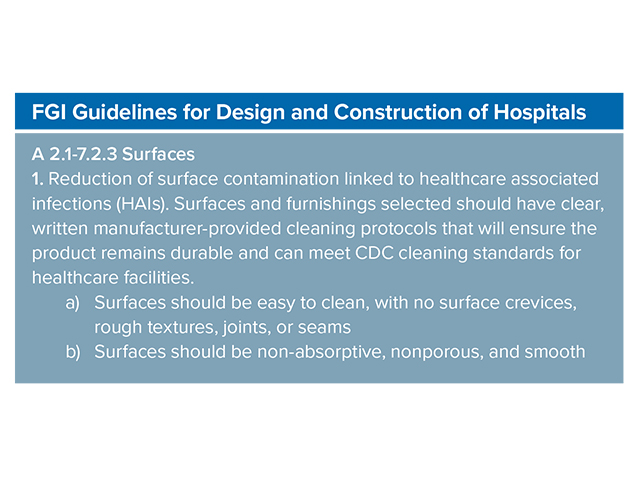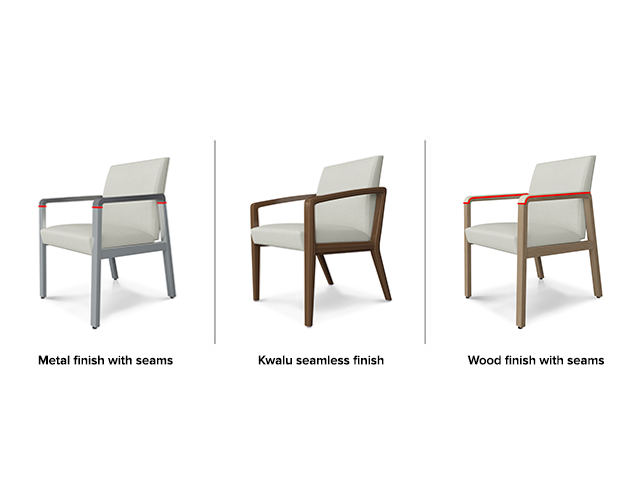
It is a good question and one many hospitals are taking a closer look at as we remain in the throes of the coronavirus pandemic. The FGI guidelines is the most widely recognized guidance for planning, design, and construction. What they have to say about the furniture that should be used in hospitals matters. Many challenges result from the vast selection of furniture choices that designers face when specifying projects and the cost associated with this investment. The FGI guidelines for furniture in hospitals and other medical facilities is simple. Furniture here should have no joints, no seams and no surface crevices.
Seems pointless to have furniture with seams – they do not comply

Wood chair manufacturers needed to add a non-porous material by way of polyurethane or solid surface arm caps. Metal chair manufacturers choose to add polyurethane or solid surface arm caps. When these new materials are added, they create seams and surface joints. The arms on a typical Kwalu guest chair are made from one piece of Kwalu material, are seamless and have no surface joints.
If it can’t be cleaned it does not belong – it does not comply

It is important high touch healthcare furniture, the tables and seating, stands up to quick and intense cleaning – bleach cleaning. Chairs with wooden arms and legs are porous and may harbor bacteria, viruses, and other pathogens. Those pathogens reveal themselves and grow once the wood protective coating begins to break down and disappear after repeated cleaning and disinfection. Kwalu frames are bleach cleanable and do not break down – ever.
